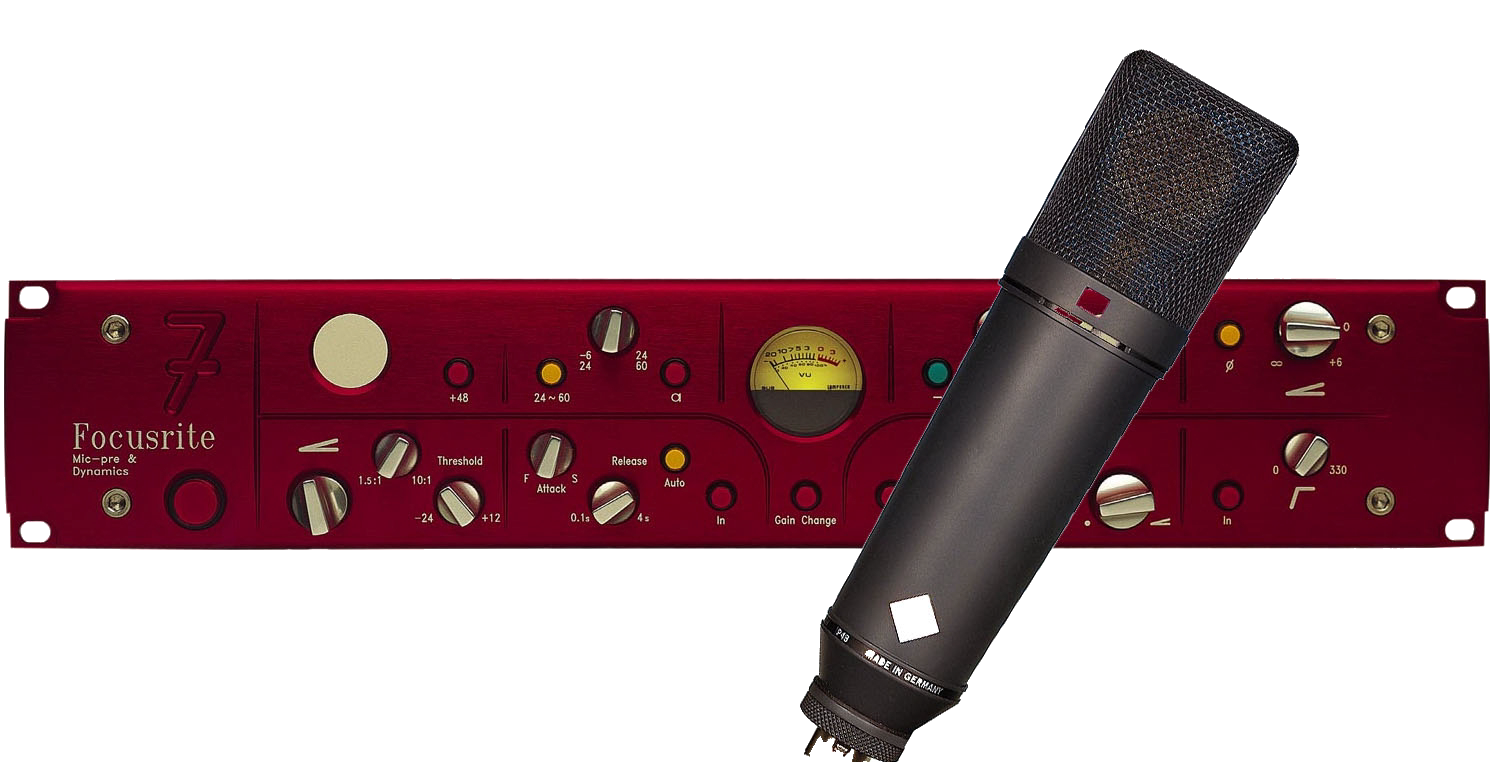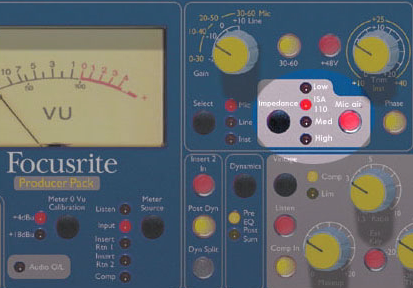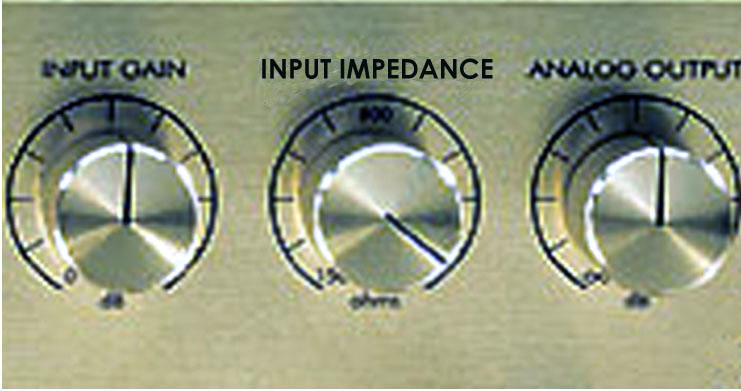Nov 19, 2022
Understand Impedance, Microphones, and Preamps
Microphones, preamps and impedance
By Rob Jones
Every microphone inevitably has an output impedance. And correspondingly every microphone pre-amplifier has an input impedance. These characteristics simply describe the “resistance” to signal current flow out of the microphone circuitry and into the preamplifier. The microphone impedance is usually made quite low to allow a reasonable current to flow and the amplifier impedance is made large enough for that current to develop a reasonable voltage across its input.
In a simple and ideal world that might be the end of the matter but, as most users are aware, in actual practice the input impedance of a microphone pre-amplifier can have a great effect on the sound of the recorded signal. More accurately, the (often quite complex) impedance of a mic-pre will interact in a unique way with the output impedance of an individual design of the microphone. Whether you view this as a nuisance or an asset depends on your requirements and taste, but this interaction explains why certain combinations of microphone and mic-pre have become revered within sections of the industry, rather than the mics or pre-amps alone. The Neumann U87 and Focusrite Red 7 or ISA series are classic examples [Figure 1).

Frequency response and level
The main reason why impedance has such an effect is the significant impact it has on the frequency response and output level of the microphone. The complete circuit needs to be considered and a key factor is the mic-pre input impedance in relation to that of the microphone. The absolute value of either is less important than their ratio to each other. Typical figures vary considerably but some microphones have a nominal value as low as 30Ω, many are around 150-200Ω and figures as high as 600Ω can be met. Microphones with low output impedances are able to drive long microphone lines with fewer losses and less variation in frequency response. Ones with higher output impedance may develop a greater voltage output but are likely to show more variability in response.
A pre-amp with a relatively low impedance “sees” a lower voltage level from the mic and is also likely to emphasize its frequency-related variations, resonances and dips. However, a relatively high impedance yields a greater overall level and, often, a flatter frequency response. It may also alter extreme HF and transient response to give an increase in perceived clarity and brightness. Dynamic microphones, without any form of buffering, are particularly sensitive to the impedance that they see and may produce very erratic frequency responses with pre-amp impedances dramatically different from that which the designer had in mind. This is because the circuit impedances have a direct effect on the damping of the voice coil.
Matching microphone and pre-amp impedances to the same value (power-matching) reduces both the level and the S/N ratio by 6dB and is not a technique that is used for those reasons. For dynamic and condenser microphones, the preferred preamp input impedance is generally about ten times that of the microphone output; normally around1.2kΩ or 2kΩ. This figure is partly chosen because of inherent noise considerations and also for additional factors such as the effect of phantom power resistors. However, there are a number of circuit configurations that can, to some extent, isolate these factors from the actual input impedance so the situation is more complicated than it might appear.
Ribbon microphones may require more careful preamp selection since their fundamental output impedance is very low indeed (~ 0.1Ω), as is their voltage output. In order to bring this voltage up to a more practical level, a transformer is used which also raises the output impedance. For those microphones that have a nominal output impedance of 30-120Ω, a pre-amp impedance of as low as 600Ω is likely to be a good choice; for nominal output impedances of 120-200Ω, a 1.4kΩ design (such as the Focusrite ISA 110) is probably a better starting point.
Transformers
Transformers are rather complex in their AC behaviour, having capacitance, inductance and resistance, and this leads to an impedance that will vary with frequency. The characteristics are extremely dependent on the transformer design and the circuit that it is part of, but transformer output microphones will often have a performance that changes significantly across the audio spectrum. In the same way transformer-input pre-amps, as most early “classic” designs were, tend to have fairly low nominal input impedances that vary with frequency and even amplifier gain.
The use of transformer inputs, particularly, will result in a subtle colouration of the signal and this will be specific for any given microphone and the amplifier gain setting. Electronic inputs, on the other hand, mostly have a higher input impedance which remains substantially constant with frequency. This type of input, which is relatively inexpensive and has been fitted to multi-channel analogue desks of recent years, can be extremely linear and accurate but often produces a sound that is judged to be somewhat dull and lifeless. If “character” is what you are looking for then it may well not satisfy.
External mic preamplifiers
External mic-preamp designs have burgeoned to resolve this problem and the use of valve (tube) amplifiers and transformer inputs has (re)gained considerable vogue precisely because of the “warmth” they bring to recordings. This is not due to any innate perfection but to the fact that such circuit components allow a small level of desirable harmonic distortion, primarily 2nd-,3rd-, and 5th-order, to be applied to the signal. This is partly due to transfer characteristics but also a result of the amplifier impedance response.
While the output impedance characteristic of a microphone is fixed in manufacture, the input parameters of a microphone preamp do not have to be. A feature on some newer pre-amps (eg Focusrite ISA 428 and 430 MKII — figure 2) is a variable input impedance, which allows the level of transformer and microphone interaction to be adjusted. It is therefore possible to create a variety of mic/mic-pre ‘colours’. It is also possible to add additional reactive components that intentionally alter the transformer’s impedance at HF. An inductor across the transformer secondary – an “air” circuit – can produce an attractive shimmer and top-end boost to the output.

“Impedance” is only of interest in the context of a complete circuit, and “matching impedance” as far as microphones and preamplifiers go, is a widely misunderstood term. Most microphones can be used very satisfactorily with most preamplifiers and true “matching” is actually undesirable. However, if you are seeking a particular quality, tone, colouration, or character – the terms are not fixed – then picking the right combination of equipment can be very helpful. Using the interaction of a specific microphone’s output impedance with a specific preamplifier’s input impedance to create some subtle changes in the overall response may well produce exactly what you are listening for.

Rob Jones deals with technical aspects of marketing at Focusrite Audio Engineering Ltd. He is a graduate of the Tonmeister course at the University of Surrey. Once upon a time, he used to be an actor but then found music to be far more interesting.
Originally published for Microphone-Data.com
© 2022 Micpedia
